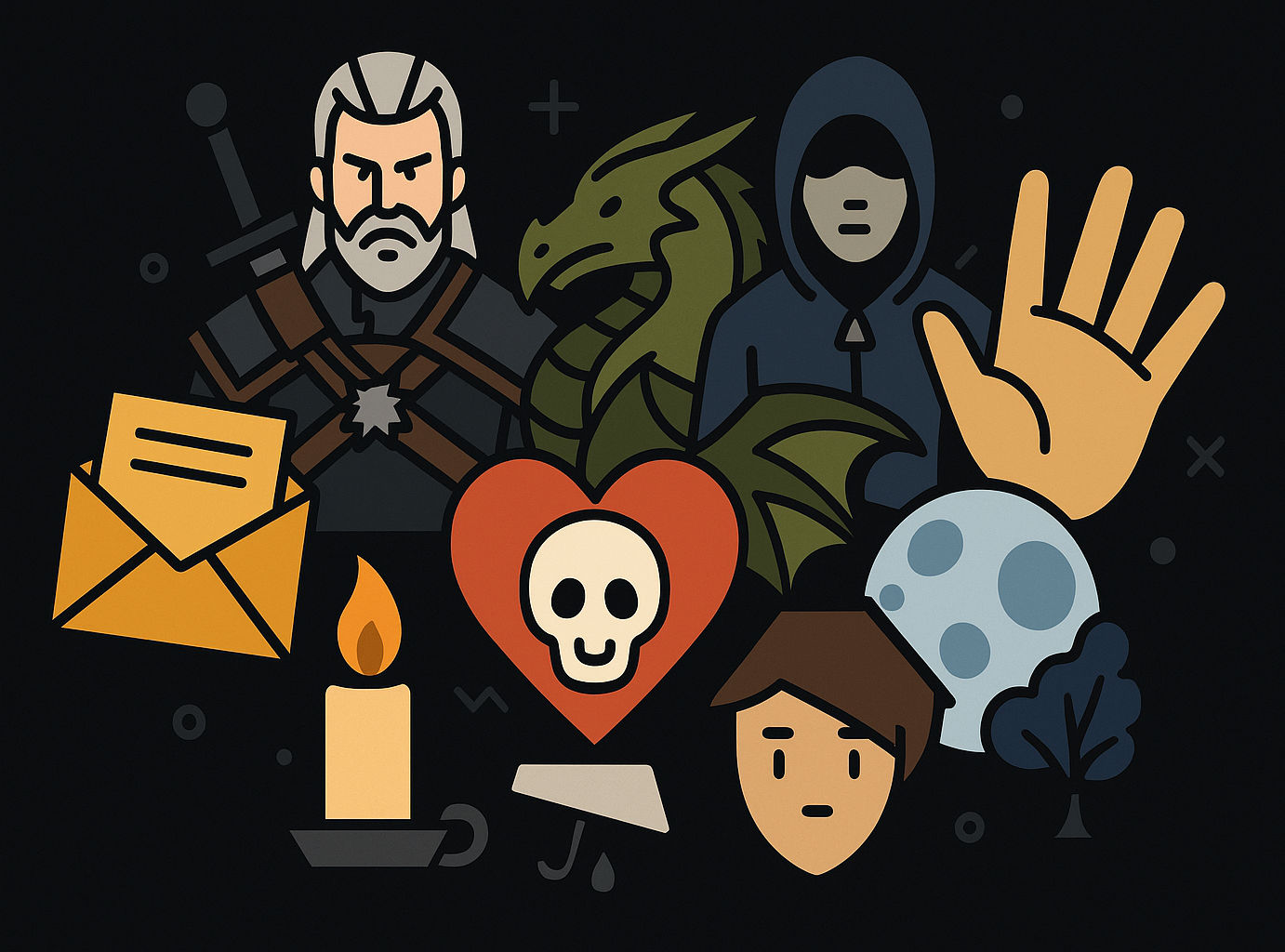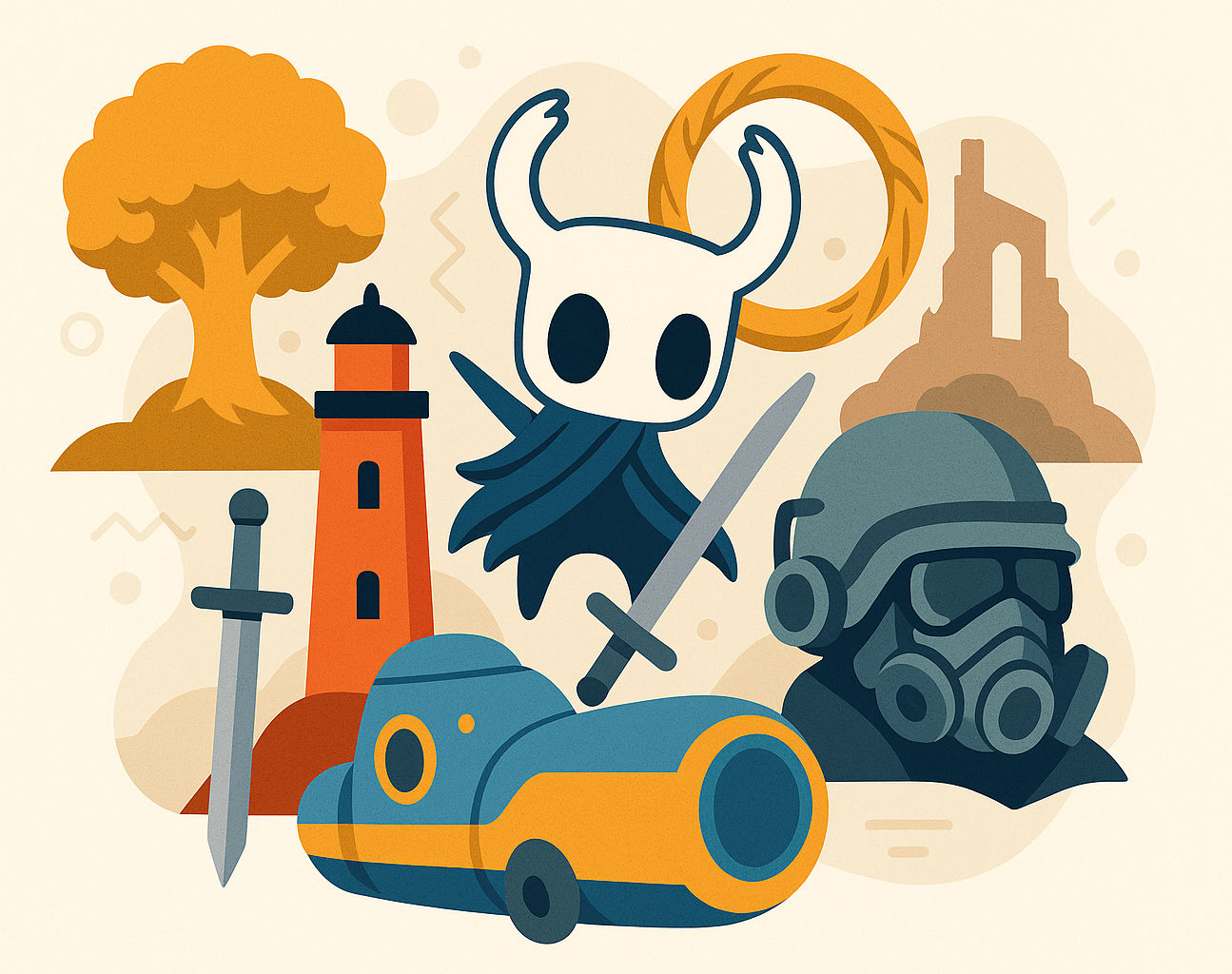Top 10 Indie Games That Outshine AAA Titles
June 22, 2025
In recent years, indie games have surged to the forefront of the gaming industry, delivering experiences that rival — and often surpass — those of big-budget AAA titles. Armed not with massive marketing campaigns or hundreds of developers, but with passion, creativity, and vision, indie studios are redefining what makes a game exceptional. These developers dare to take risks that major studios often avoid, resulting in gameplay innovation, emotional storytelling, and unforgettable artistic styles.
Where AAA games may prioritize photorealism and spectacle, indie games often focus on the essence of interaction. From emotionally charged narratives to genre-defining mechanics, independent games are pushing the medium forward in remarkable ways. In an era where gamers seek authenticity, experimentation, and fresh perspectives, the rise of indies has become more than a trend — it's a revolution.
This article celebrates ten extraordinary titles that didn't just stand alongside their AAA counterparts—they outshone them in design, storytelling, and impact. These are the games that prove you don’t need a multi-million dollar budget to create something timeless. Whether through pixel art or minimalist mechanics, they each made waves by being boldly different and deeply resonant. If you're searching for indie games that outperform big-budget blockbusters, these titles are where to start.
10. Return of the Obra Dinn

Return of the Obra Dinn, another visionary title from Lucas Pope, is a first-person deduction game set aboard a ghost ship in 1807. You play as an insurance inspector tasked with determining how each crewmember died. Using a magical stopwatch, you can revisit the moment of death and piece together events using visual clues, accents, uniforms, and relationships.
The monochromatic 1-bit art style is both minimalist and striking, creating a haunting atmosphere that draws you into its world. The game rewards logic, note-taking, and observation over reflexes or tutorials. Every solved death feels earned—every discovery a revelation.
In a landscape dominated by cinematic experiences, Return of the Obra Dinn challenges players to think, analyze, and deduce. It’s one of the most original and intellectually stimulating games of its generation. And it came not from a massive studio, but from a single developer with a clear vision. That’s the power of indie.
9. Slay the Spire

Slay the Spire, by MegaCrit, took two seemingly niche genres—roguelikes and deckbuilders—and fused them into one of the most addictive indie experiences ever created. Each run involves choosing a character, building a card deck, and ascending a procedurally generated tower filled with monsters, relics, and choices.
The beauty of Slay the Spire lies in its strategic depth and replayability. Each card has synergy potential, and victory requires careful planning and adaptation. The randomness of the run is balanced by the control of your deck. Players constantly evolve their strategy based on unpredictable events, enemy types, and upgrade options.
Slay the Spire’s influence has rippled across both indie and AAA design. Its elegant mechanics have inspired dozens of other deckbuilders. But none quite match its balance, clarity, and pacing. This indie gem redefined how addictive and cerebral roguelikes could be, proving again that innovation often comes from the ground up.
8. Papers, Please

In Papers, Please, Lucas Pope transformed bureaucracy into compelling gameplay. Set in a fictional totalitarian state, you play as a border inspector tasked with deciding who gets to cross into the country. Through passports, fingerprints, and lies, you must make moral decisions that affect lives—and your own survival.
The game’s minimalist design enhances its dystopian atmosphere. Every stamp, every decision carries weight. As the days pass, rules tighten, families suffer, and your conscience begins to fracture. Unlike AAA games that often shy away from political complexity, Papers, Please leans into it, using mechanics to deliver profound commentary on authority, power, and empathy.
It’s a uniquely interactive form of storytelling, where the player becomes complicit in systems they might otherwise judge. Papers, Please redefined what narrative gameplay could look like, doing more with spreadsheets and stamps than most games do with explosions and dialogue trees.
7. Dead Cells

Motion Twin’s Dead Cells brings blistering action, roguelike unpredictability, and Metroidvania exploration into a perfect blend. With fast-paced combat, randomized level layouts, and dozens of weapons and powers, each run feels fresh. The game’s pixel art style is detailed and expressive, complemented by a thumping soundtrack and silky-smooth animation.
Dead Cells’ moment-to-moment gameplay is more responsive than many AAA action games, with precise dodging, combo chaining, and tactical upgrades. Its progression system rewards experimentation, while its difficulty curve challenges but never punishes unfairly.
What makes Dead Cells a standout indie title is its kinetic flow—every encounter feels earned, every victory satisfying. Frequent free updates from the dev team keep the game evolving, unlike many big-budget games locked behind DLC walls. Dead Cells is a shining example of how indie studios can outclass AAA developers in gameplay refinement and player engagement.
6. Outer Wilds

Outer Wilds, developed by Mobius Digital, is a time-loop exploration game that delivers one of the most unique experiences in gaming. Players assume the role of a space explorer investigating a mysterious solar system doomed to collapse every 22 minutes. With no combat or traditional progression, your primary tool is knowledge—what you learn in each loop carries over, revealing secrets, physics, and ancient ruins.
The game embraces true exploration. There are no waypoints, no markers—just your ship, your journal, and the vast unknown. From black holes to quantum objects, Outer Wilds turns science fiction into interactive poetry. The hand-crafted solar system is rich with surprises, and discovering them feels deeply rewarding.
Outer Wilds outshines AAA games by valuing wonder and curiosity over spectacle and hand-holding. Its endgame delivers one of the most profound emotional payoffs in gaming, made all the more impactful by the journey that leads to it. This is a game that rewards thinking, questioning, and observation—an indie triumph in its purest form.
5. Stardew Valley

ConcernedApe’s Stardew Valley brought farming sims into the spotlight in a way few expected. Inspired by Harvest Moon, this indie darling evolved into a global sensation, offering a rich life simulation experience filled with farming, mining, fishing, relationships, and seasonal events. But what makes Stardew so powerful isn’t just its gameplay variety—it’s the heart behind it all.
The game allows players to escape the stress of modern life and find comfort in routine and community. Villagers have personalities, schedules, and evolving storylines. The game’s pixel art and music create a cozy, nostalgic atmosphere that invites relaxation. Every system in Stardew Valley’s world is interconnected, making player decisions feel meaningful and organic.
Unlike many AAA games with bloated content and microtransactions, Stardew delivers hundreds of hours of meaningful play for a modest price—and all from a single developer. Stardew Valley proves that indie games can offer depth, soul, and lasting impact without any corporate gloss or compromise.
4. Undertale

Undertale, developed by solo creator Toby Fox, took the gaming world by storm with its quirky humor, unexpected depth, and revolutionary mechanics. On the surface, it looks like a simple retro-style RPG. But underneath lies a game that subverts expectations at every turn. You can defeat enemies by fighting—or by talking, understanding, and sparing them. Your choices truly matter, not just narratively, but mechanically.
Characters remember past actions, dialogue changes based on your morality, and multiple endings reflect how you’ve treated the world. The game doesn’t just break the fourth wall—it obliterates it, creating one of the most personalized gaming experiences ever made.
Few AAA games can match Undertale’s blend of charm, innovation, and subversion. It became a cultural phenomenon not because of a marketing budget, but because it made players feel seen, challenged, and emotionally connected. Undertale exemplifies how indie games can redefine what interaction and consequence mean, offering a uniquely powerful experience in a tiny package.
3. Hades

Supergiant Games’ Hades redefined the roguelike genre with its seamless fusion of narrative progression and action-packed combat. As Zagreus, the rebellious son of Hades, players attempt to escape the Underworld through procedurally generated challenges. Each death is not a failure, but part of the story—new dialogue, character development, and upgrades emerge every time you return.
The voice acting, visual style, and pacing rival any AAA release, while the writing balances wit, emotion, and Greek mythology in a way that feels both epic and intimate. Combat is fluid and endlessly customizable thanks to a broad array of weapons and divine upgrades from the gods of Olympus.
What sets Hades apart from AAA competitors is its brilliant loop: die, grow stronger, uncover more story, and try again. It maintains player engagement like few other games, turning failure into forward momentum. Hades stands as proof that indie studios can masterfully blend storytelling with gameplay systems, outshining even the most polished AAA action titles.
2. Celeste

Celeste, created by Matt Makes Games, is more than a platformer—it's an emotional journey wrapped in pixel-perfect design. Players control Madeline as she climbs the titular mountain, facing literal and metaphorical challenges. The tight, responsive controls offer an incredibly satisfying and challenging gameplay loop, but what truly elevates Celeste as an indie masterpiece is its profound storytelling and emotional honesty.
The game addresses themes like anxiety, depression, and self-acceptance with rare sensitivity. Each chapter presents new mechanics, pushing players’ skills while reinforcing the narrative. The pixel art style is minimalist yet expressive, and the soundtrack—composed by Lena Raine—is a beautiful mix of tension, serenity, and hope.
Unlike many AAA games that struggle with meaningful representation, Celeste offers a deeply personal story that resonates with players on a human level. The optional “B-Sides” and collectibles add replayability without undermining the core experience. Celeste demonstrates how indie games can deliver both gameplay excellence and emotional depth, creating something that lingers long after the credits roll.
1. Hollow Knight

Hollow Knight, developed by Team Cherry, is a masterclass in atmospheric world-building and precise gameplay. This Metroidvania-style indie hit immerses players in the haunting underground world of Hallownest—a beautifully hand-drawn kingdom filled with forgotten lore, secret passageways, and challenging enemies. Unlike many AAA titles that rely on flashy visuals or voice acting, Hollow Knight thrives on mood, sound design, and tight, responsive combat mechanics.
The game’s non-linear design rewards curiosity. Players uncover new powers, backtrack to previously inaccessible areas, and slowly unravel a deep narrative without heavy exposition. Boss fights are brutal but fair, and the level of polish is astounding for a team of just a few people. The orchestral score elevates every encounter, adding emotional weight to each victory and defeat.
What sets Hollow Knight apart from mainstream titles is its commitment to subtle storytelling, mechanical depth, and player autonomy. It’s a game that respects your intelligence and patience, offering true satisfaction in discovery. With its expansive content and critically acclaimed DLCs, Hollow Knight proves that indie developers can create epic experiences that rival and often surpass anything found in the AAA landscape.
Final Thoughts
These ten indie games didn’t just find success—they redefined what video games could be. With limited resources but limitless creativity, they challenged industry norms and set new standards for what makes a game meaningful, engaging, and unforgettable. In many ways, they exposed the limitations of AAA development, proving that innovation thrives under constraint.
Whether through emotional storytelling, unique mechanics, or immersive worlds, these indie titles offered experiences that big-budget games often shy away from. They weren’t afraid to be weird, bold, personal, or hard. And in doing so, they captured the hearts of millions.
As gaming continues to evolve, the influence of indie developers grows stronger. They remind us that games are not just products, but art. They are expressions of passion, rebellion, and vision. These games didn’t just outshine AAA titles—they proved that the future of gaming is being written by small teams with big ideas. And that future has never looked brighter.


